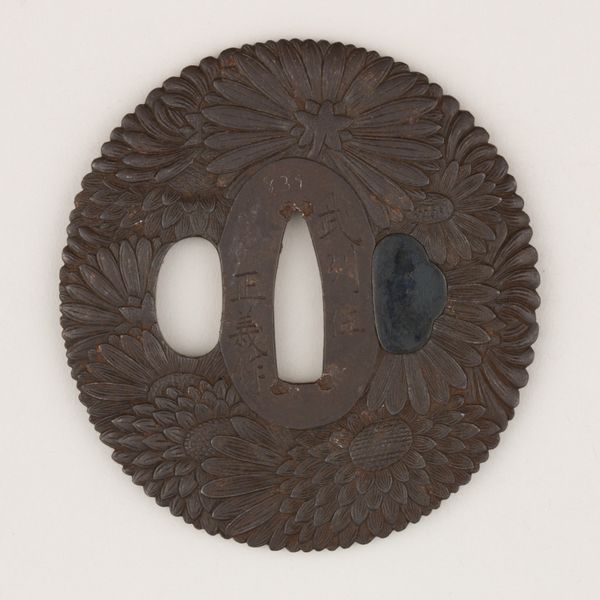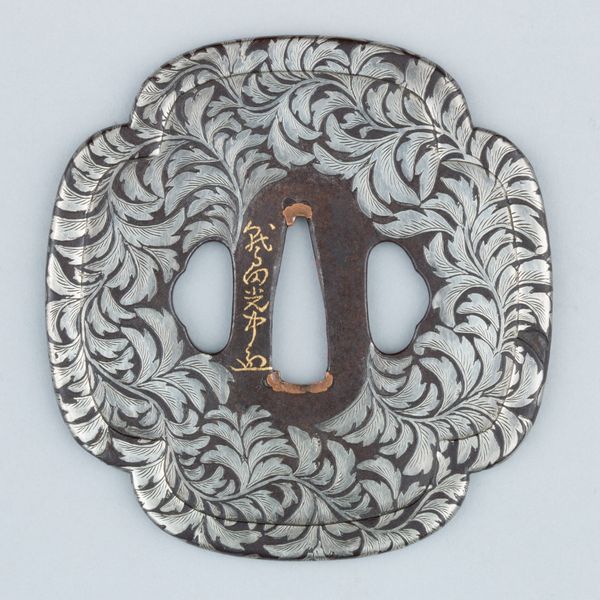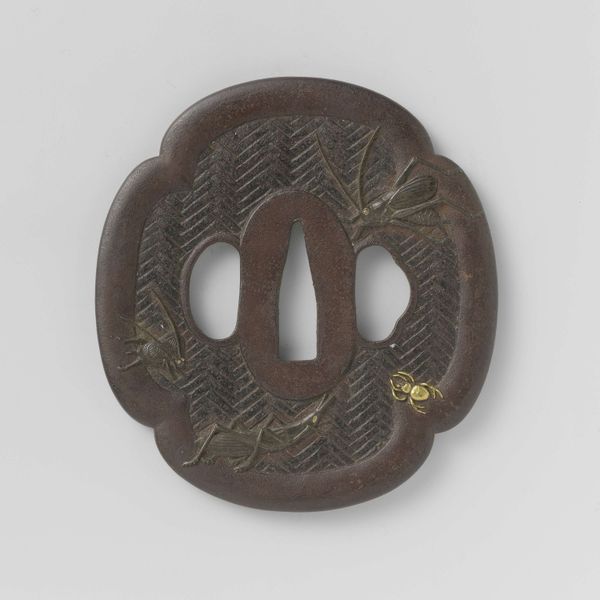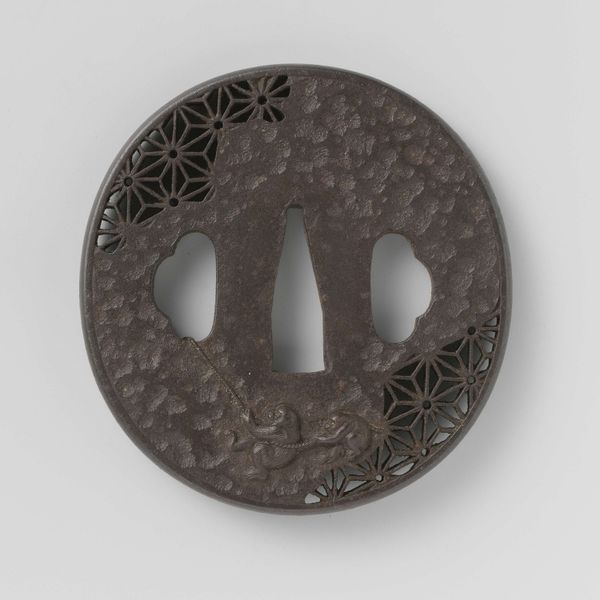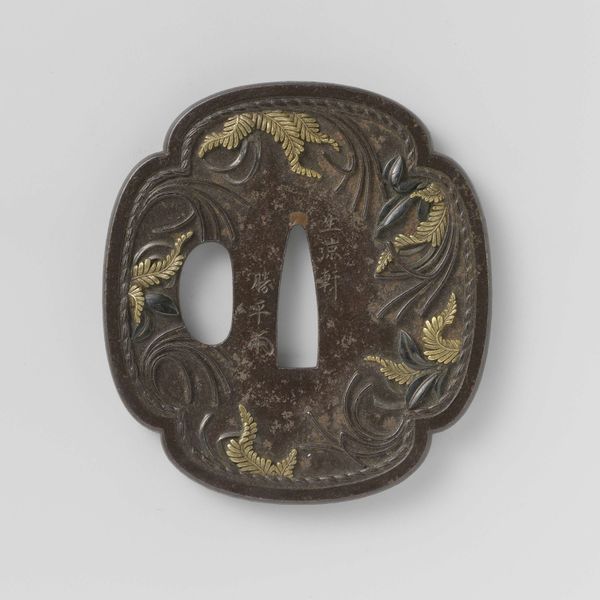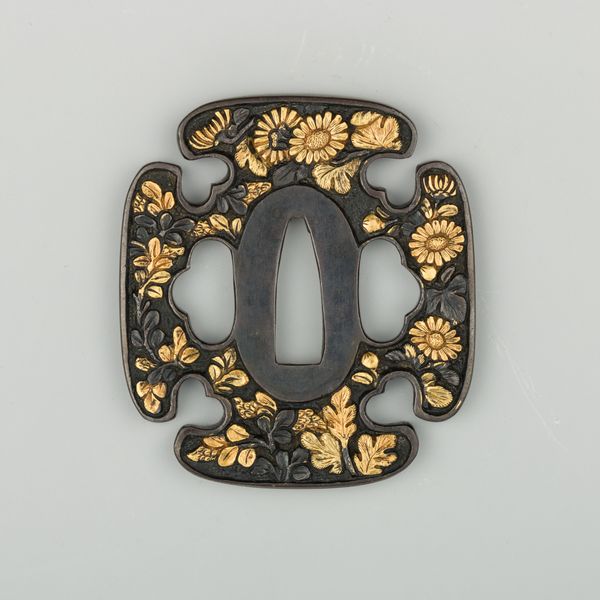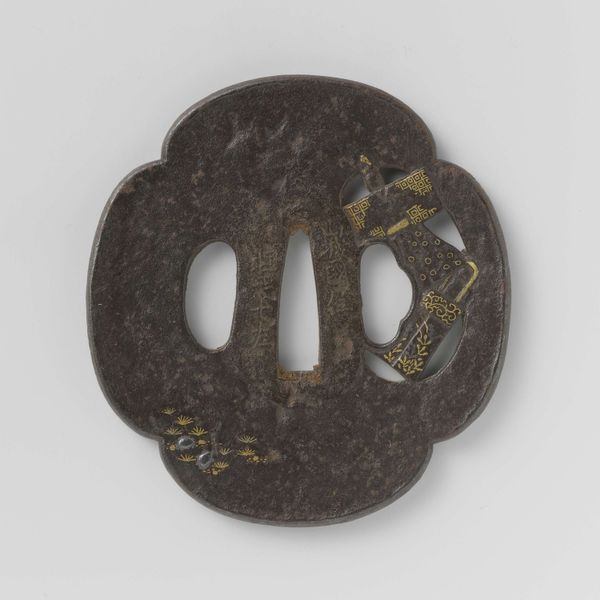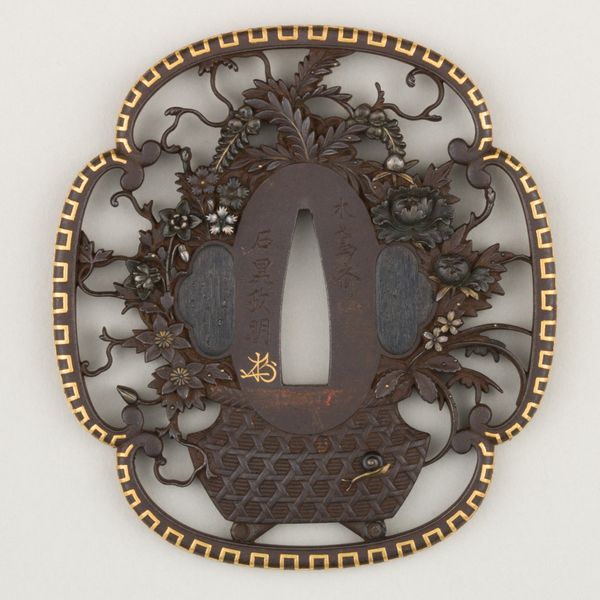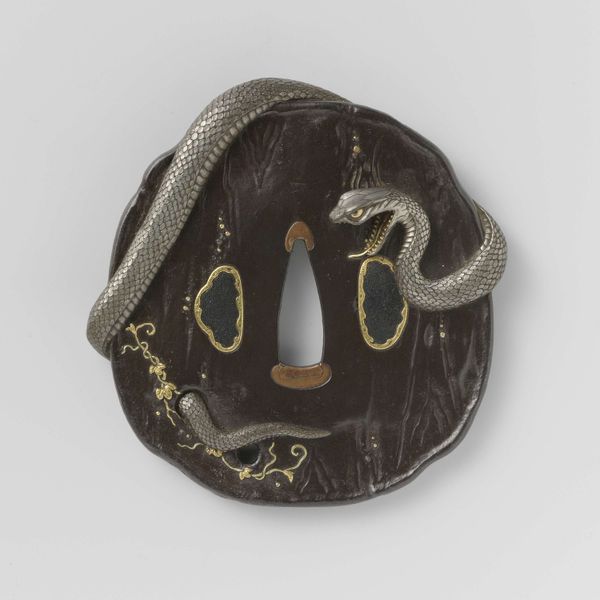
Sword guard (<i>Tsuba</i>) With Peony Motif (牡丹図鐔) 1775 - 1825
0:00
0:00
#
natural stone pattern
#
rippled sketch texture
#
circular oval feature
#
natural shape and form
#
3d printed part
#
detailed texture
#
furniture
#
japan
#
sculptural image
#
carved into stone
#
curved surface
#
round circular shape
#
armor
#
sword
#
arm
Dimensions: H. 2 7/8 in. (7.3 cm); W. 2 13/16 in. (7.1 cm); thickness 1/4 in. (0.6 cm); Wt. 5.9 oz. (167.3 g)
Copyright: Public Domain
Curator: The Metropolitan Museum holds a fascinating object crafted by Takehara Tomomasa between 1775 and 1825. It is a sword guard, also known as a tsuba, adorned with a peony motif. Editor: My initial reaction is one of restrained power. The dark metal and deeply carved floral design project a sense of elegance tempered by practicality. It’s a striking fusion of beauty and martial purpose. Curator: Precisely. The tsuba wasn’t merely decorative; it protected the swordsman's hand. But consider the peony. In Japanese culture, it’s associated with wealth, honor, and nobility, so its presence elevated the sword beyond its basic function. It’s now a statement of social standing. Editor: Note how the peony is represented, though. There is a dynamic interplay between positive and negative space. The flower petals are rendered in such high relief, aren't they, it almost becomes sculptural. But the choice of steel keeps it from being delicate. Curator: The steel, likely wrought iron, reflects the blacksmithing skills of the Edo period, when such ornamentation became highly prized amongst samurai. This level of detail also indicates a period of relative peace when functional items were ornamented for use by wealthier samurai. Editor: That tension speaks volumes. The formidable material embodies a culture of warfare while the detailed carving celebrates peace. Perhaps it acted as a reminder, constantly at the warrior's fingertips, that these opposing ideals co-exist. Curator: Indeed. And let’s not overlook the impact of display and collection. By placing a functional object, charged with status and complex social associations, into a museum context, its value is entirely reframed again. Editor: A vital point! Its historical potency now mingles with purely aesthetic consideration. We contemplate line, form, and texture, all the while it is displaced from its practical context. That act of displacement charges our interaction. Curator: Examining "Sword Guard With Peony Motif" is truly about understanding how the object performs on multiple registers from utility to symbolism, production to curation, doesn’t it? Editor: I'd agree wholeheartedly; it’s been enlightening to consider how societal currents and refined aesthetic techniques come together in a singular piece of functional art.
Comments
No comments
Be the first to comment and join the conversation on the ultimate creative platform.
